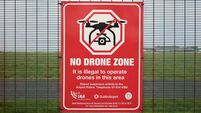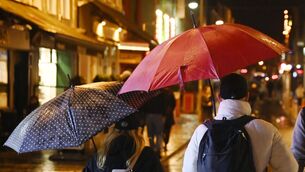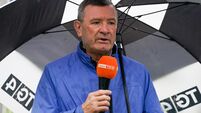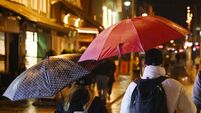Pilots ‘insufficiently trained’ to fly doomed Airbus jet
Based on newly-discovered cockpit recordings from the 2009 crash, the French air accident investigation agency is recommending mandatory training for all pilots to help them fly planes manually and handle a high-altitude stall.
The findings show that the two co-pilots were facing faulty speed readings from unreliable sensors and repeated alarm signals, but fail to explain why the pilots responded the way they did.
All 228 people were killed when the Airbus 330, en route from Rio de Janeiro to Paris, crashed as thunderstorms hit over the Atlantic on June 1, 2009.
Three young Irish doctors, Aisling Butler, from Roscrea, Co Tipperary, Jane Deasy, Dublin, and Eithne Walls, Ballygowan, Co Down, were among those who lost their lives in the crash.
It was the worst accident in Air France’s history.
“The pilots were in a situation they didn’t understand,” investigator Alain Bouillard told a news conference.
The French aviation investigation agency, or BEA, is forming a special group, including aviation experts and physiologists and psychologists, to study the pilots’ possible responses in the last few moments of the flight to help determine why they did what they did.
The passengers were never told what was happening as Flight 447 went into an aerodynamic stall and then dived for 3½ minutes into the sea, according to a summary of the BEA’s latest findings released yesterday.
“We understood how the accident came about. Now we must learn why it came about,” Bouillard said.
The summary confirms that external speed sensors obstructed by ice crystals produced irregular speed readings on the plane. Since the accident, Air France has replaced the speed monitors on all its Airbus A330 and A340 aircraft.
The BEA says neither of the co-pilots at the controls had received recent training for manual aircraft handling, or had any high-altitude schooling in case of unreliable air-speed readings. A stall warning sounded numerous times, and once for a full 54 seconds, but the crew made no reference to it in cockpit exchanges before the jet crashed, according to the BEA.
“Aircraft have become so reliable that pilots rarely fly the airplane without all the automation helping them. Then when they get into unusual circumstances, the pilots are really in unfamiliar, unknown territory,” said John Goglia, a former US National Transportation Safety Board member and an expert on airline safety.
Pilots are required to fly with autopilot above 24,000 feet.
Families of the victims have been eager to hear more about what happened to Flight 447. Several met with investigators yesterday morning at the BEA’s headquarters in Le Bourget outside Paris.
“It’s mainly the technical elements that we are missing,” Robert Soulas, who lost his daughter in the crash, told AP Television News. “It’s completely premature to accuse the pilots if we don’t know what situation they were confronted with.”
In a statement, Air France said there was currently no reason to question the crew’s technical skills. The airline said the report showed that a series of unlikely failures led up to the stall and crash, and said its pilots demonstrated a professional attitude and remained “committed to their task to the very end”.
The airline also suggested the aircraft’s systems and alarms may have “hindered the crew’s understanding of the situation” during the stall, in comments possibly intended to shift some blame away from its pilots and onto the Airbus jet itself.
Bill Voss, head of the Flight Safety Foundation, an independent aviation safety advocate, said it would be a “tragic mistake” to blame this only on Air France and its training procedures.
“This is an industry problem, this accident could have happened as easily in other airlines,” he said. “A whole new generation of pilots have never had the chance to train on the real scenarios that will affect them in the real world. . . We are overdue for a training overhaul.”
Among other recommendations from the BEA is equipping passenger planes with an image recorder that shows the instrument panel so that investigators can analyse what went wrong.
The captain was on a rest break when the warnings began. It’s unclear why the co-pilot at the controls, flying manually in what became the final minutes of the flight, maintained a nose-up input — contrary to the normal procedure to come out of an aerodynamic stall. Normally, the nose should be pointed slightly downward to regain lift in such a stall, often caused because the plane is travelling too slowly.
A basic manoeuvre for stall recovery, which pilots are taught at the outset of their flight training, is to push the yoke forward and apply full throttle to lower the nose of the plane and build up speed.
This procedure, which can cause the aircraft to quickly lose several thousand feet of altitude, can be dangerous if the plane is near the ground. But with AF447 flying at over 35,000 feet, the risk of that would have been negligible.
The BEA chief said that at one point during the final few minutes of the flight “the situation was salvageable”.
At 2 hours, 10 minutes and 5 seconds into the overnight flight, the autopilot and then auto-thrust disengaged when the stall warning sounded twice. The co-pilot at the controls nosed the plane up.
A minute and a half later, the captain arrived, and seconds later, “all the recorded speeds became invalid and the stall warning stopped,” the summary says.
The recordings end 4 minutes, 23 seconds after the first stall warning.
No announcement was ever made to passengers.













